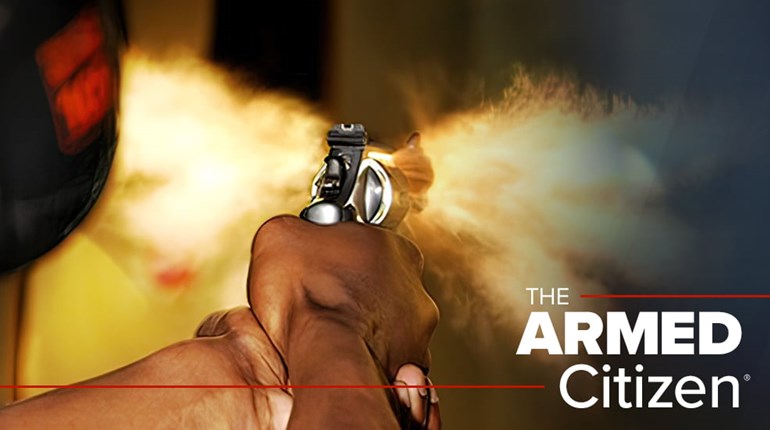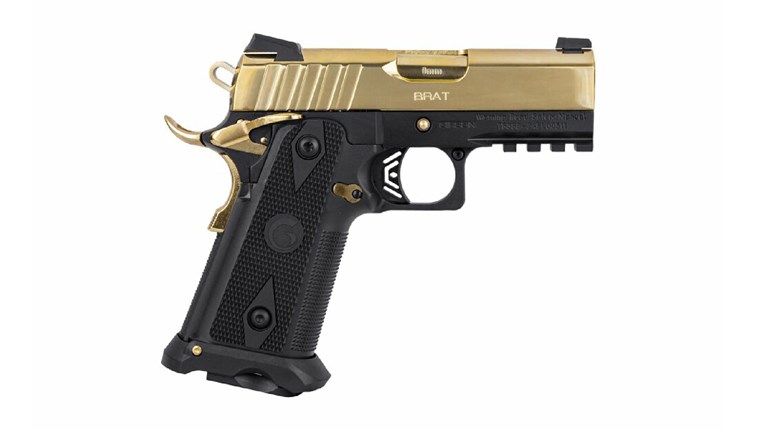
Keeping up with AR/MSR-pattern rifles is a daunting proposition. A casual search yields more than 100 manufacturers. Configurations run from dozens of fixed and collapsible stocks to barrel lengths ranging from seven to 24 inches (although anything shorter than 16 requires serious federal paperwork). Then there are the pistol variants. We’d be the first to argue that a roughly 6-lb., 2-plus-ft.-long “pistol” is a strange contortion of the language, but that is for another time.
Certainly the rifle is best known in its original calibers: Eugene Stoner’s mid-50s AR-10 prototype was wrapped around the then-new .308/7.62x51, and the subsequently adopted AR-15/M16 was in .223/5.56x45. Available calibers now encompass a quite literal forest of their own, ranging from .22 LR to .458 SOCOM—more than 60 all told. Truly, the AR has become the MSR, or modern sporting rifle. As America’s most popular long arm, it’s certainly living up to the name. We’d have ventured that all the niches—both commercial and utilitarian—might finally be full.Far from strangers to things AR, their goal “has not been to build yet another version of the AR/MSR, but to see how we can make a great rifle even better.”
Evidently, we’d have also been wrong—or at least from the perspective of Jay Lesser and the folks at Sharps Rifle Co. of Glenrock, Wyo. Far from strangers to things AR, their goal “has not been to build yet another version of the AR/MSR, but to see how we can make a great rifle even better.”
Based on the venerable .257 series of projectiles, the .25-45 brings a host of advantages to the AR platform. Perhaps foremost is the ability to take the rifle (or separate upper for your existing lower and magazines) afield in any state that allows centerfire rifle hunting. With an initial muzzle velocity hovering near 3,000 f.p.s. (1,739 ft.-lbs. of energy), the caliber is a flat shooter that also provides good energy retention, even out to 500 yards—1,627 f.p.s. and 511 ft.-lbs. Perfect for whitetail, mule deer, mountain lion, boar and antelope with proper shot placement, Sharps confirms field success on all these species.
A 200-yd. zero also commends the combo for varmints: It’s only 1.19 in. high at 100, and 7.36 low at 300 yds. As much as we like our .223s, they just don’t compare. At the price of 10 percent more recoil, the .25-45 has the same energy at 500 yds. as our favorite .223 has at 300, with about half the drop.
But as good as the numbers look, it was our range experiences that impressed us most. For instance, that statistic of a 10-percent increase in recoil Sharps mentioned? We have to assume the number is based on an actual calculation, because behind the rifle, you just won’t feel it. Off hand, the rifle shot beautifully: A Leupold Mark 6 1-6x optic, CMC 3.5-lb. trigger and Diamondhead handguard made the gun easy to handle and a reliable, precise hitter.
When we mounted up a Harris bipod to vet overall precision, we were even more impressed. In calm wind, but otherwise poor conditions (poor light, a difficult seated posture), the Sharps nevertheless allowed us to produce routine under-MOA groups, the best at .664 (3 at 100 yds.). We pointedly suspect ourselves in this not being—perhaps dramatically—better. Five rapid shots to test impact point changes with barrel heating contained a three-shot cluster at a miniscule .163 MOA—only our blundering blew it out. Impact changes, our foot!
Sharps’ .25-45 is truly a superb advance of the art in the AR/MSR domain. How it stacks up as a “shooter,” we’ve said all we need to say. But there’s another facet of the Sharps story that we’d be remiss not to mention, and here it is. It’s impossible to go end-to-end on this rifle—and to deal with the folks in Glenrock—and not conclude it’s more than nuts and bolts, it’s people who like their work, and do it well.
It makes us think it would be all but impossible to go wrong with a Sharps .25-45.
Nuts And Bolts
There are so many options for AR/MSR fitments these days, it doesn’t make any sense to over-specialize items on a factory rifle: The likelihood a buyer will want to change them is simply too great. In our opinion, though, the Sharps Rifle Co. .25-45 walks this line with accomplished delicacy. Where it matters, everything we could test was superb. Where features tip over into tastes, no more than necessary are supplied.
The stock and grip are pure vanilla, for instance—solid A2, but nothing more. Keep in mind, however, that this setup was good enough for us to stay well under 1 MOA in our shooting tests. Though we’d rather have something that pushed our hand back a little further for a grip (to reduce that slight over-curl in the trigger finger), and something über-stiff like the ACE ARFX for a stock, the factory choices were plenty good enough.If you’re thinking you’ll want to take this bolt to your 5.56 upper, there is no reason not to.
In other areas, however, we thought Sharps demonstrated extremely sophisticated care in component selection and craftsmanship. A classic “AR thing” is the fit of the upper to the lower. While the impact of this on accuracy is somewhat overstated—natural stresses on the rifle in normal shooting positions tend to tighten things up—it’s still reassuring to need to press the pin with a cartridge nose from the left, and lift it with an extractor groove on the right. And this is exactly how the .25-45 opened up. Hammering with a punch, or worse yet some necessary but undesirable improvised tool is a different matter, and supremely unwelcome in the field. No worries at all with our test rifle in this quarter: Just right.
Sharps also wisely drops their Balanced Bolt Carrier and Relia-Bolt into the .25-45. These are OEM products of their own design, and outstanding supplements to the rifle. Both are NP3 Plus-drenched, S7-tool-steel components that offer minimum 60-plus percent improvements in strength (tensile and yield) over their MIL-SPEC counterparts.
This isn’t our first dance with either of these. We ran an early Relia-Bolt hard with the intent of reaching a point of failure/malfunction, and simply had to give up. An innovative lug design cut through the most crudded-up conditions we could create.
Now, we don’t just build with this bolt and bolt carrier, we retrofit. If you’re thinking you’ll want to take this bolt to your 5.56 upper, there is no reason not to. It’s a drop-in that runs like a hand-fit part (.300 Blackout, too) and may well improve your 5.56/.223’s performance. It’s a nice “bennie” too, for prospective .25-45 owners.
MSRP for the Sharps .25-45 MSR is $1,399. Complete upper-only caliber conversions are available in 16-, 18- or 20-in. lengths and multiple profiles at $699, and include the Relia-Bolt/Balanced Bolt Carrier combination. Contact Sharps at srcarms.com.



































